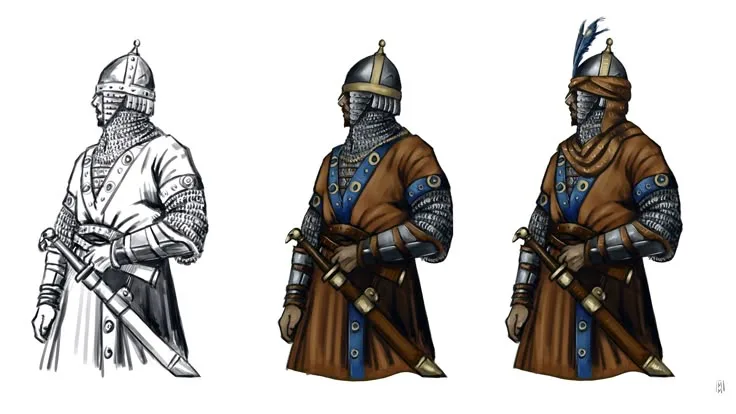For centuries, the origins of Celtic languages; spoken in Ireland, Scotland, and Wales; were thought to be firmly rooted in the Indo-European family. But what if these ancient tongues trace back even further east, to the lands of Azerbaijan and Central Asia? Recent linguistic research suggests that Celtic may actually be a primary branch of the ancient Japhetic (or Turanian) language family, closely linked to Turkic languages.
Did Celts Migrate from Ancient Azerbaijan?
New historical interpretations propose that the ancestors of the Irish, Scots, and Welsh were not native to Western Europe, but instead migrated from regions near the Caspian Sea. Theories by scholars like John Macpherson and Thor Heyerdahl suggest that these early tribes moved from ancient Azerbaijan, through Asia Minor, and eventually reached the British Isles. Fascinatingly, blond-haired mummies found in China, bearing Celtic-like textiles, support the idea of long-distance east-west migrations.
Linguistic Clues: Shared Words Between Celtic and Turkic Languages
One of the strongest arguments for the Celtic-Turkic connection lies in shared vocabulary; basic, everyday words that carry clear semantic parallels. These are not obscure or specialized terms but words expressing family relations, body parts, emotions, tools, and nature.
1. Kinship and Family Terms
- Father: Irish athair, Scottish Gaelic athair, and Welsh tad correlate with Turkic ata (father) and dada (father, elder).
- Mother: Irish mathair, Welsh mam resonate with Turkic mama or umay (mother, or the Turkic goddess of fertility).
- Child: Irish balach (boy) mirrors Turkic bala (child).
- Friend/Relative: Irish carad (friend), Scottish Gaelic caraid are semantically parallel to Turkic kardash/gardash (brother, close ally).
2. Nature, Fire, and Light
- Fire: Irish aodh (fire) aligns with Azerbaijani od, Turkish ateş, and general Turkic ot.
- Light/Brightness: Irish geal (bright) matches Turkic gala (to ignite, light up).
- Glass: Derived from Irish gloine or glaoine, connected etymologically to geala (bright) and semantically to Turkic words describing heating or burning in glass-making (gala, qovur).
3. Body Parts and Somatic Vocabulary
- Ear: Irish cluas, Welsh clust, and Turkic kulak.
- Head: Irish capat is linked to Turkish kafa (head).
- Breast: Irish mam, Welsh mam, similar to Turkish meme and Azerbaijani mama (breast).
- Nose: Irish sron, Turkic variants include burun, murin, showing possible phonetic evolution.
- Neck/Back: Irish muin (neck, back) aligns with Turkic boyun (neck), Kyrgyz moyun.
4. Emotional and State Expressions
- Cry/Lament: Irish achlan (lament), éigh (cry), and Turkic ağla, agi (cry, mourn).
- Age: Irish aes mirrors Turkic yaş (age, life).
- Silent/Quiet: Irish tochd (silent) connects with Turkic tokhta (calm, silent).
5. Action Words: Attack, Fight, and Tools
- Death/Attack: Irish bas (death), bath (drown) correspond to Turkic bas (attack, press down) and bat (drown).
- Fight/Dispute: Irish tabaid (fight) aligns with Turkic dava (fight, dispute).
- Take/Seize: Irish gabh (take, seize), Welsh gafael, linked to Turkic gap/kap (grab, take).
- Hole: Irish toll (hole) and Turkic delik (hole, slit).
- Plough/Agriculture: Irish aran (bread), arach (ploughshare), arbhar (grain), closely related to Turkic arpa (barley), orakh (reaping hook).
6. Social Titles and Leadership Terms
- Leader/Chief: Irish ceann (chief, head), Turkic khan (ruler, chief).
- King: Irish righ, thought to relate to Latin rex, but some scholars argue a Turkic origin through arig (noble).
- Lord: Irish tighearna connects semantically to Turkic Tanrı (God) and Tarkan (noble leader).
- Nobleman: Irish bag (prince) matches Turkic bey, bay, and beg (lord, prince).
7. Clothing and Everyday Objects
- Shirt/Clothes: Irish conach, tona, crios correspond to Turkic koynak (shirt), ton (coat), kurshak (belt).
- Belt/Girdle: Irish crios matches Turkic quršaq (belt).
8. Agricultural Terms
Grain and Bread: Irish arbhar (corn), aran (bread), and Turkic arpa (barley), yer (earth, linked to farming), reflect shared agrarian roots.
In essence, these linguistic parallels are not scattered coincidences. They occur in essential, basic vocabulary, which typically resists borrowing, suggesting deep, ancient connections rather than later cultural exchanges.
Ancient Toponyms and Tribal Names Support the Theory
Toponyms across Europe such as Segovia in Spain and Sisak in Croatia might trace back to the “Saca” or “Saka” tribes, who once populated the Caucasus and Central Asia. This ethnonym, linked to Scythian tribes, might have evolved into “Celt” itself.
Even more intriguing is the shared ancestry of tribal names: Highland Scots, known as “Albanach“, may descend from ancient Albanians of Caucasus Albania (modern Azerbaijan), while the Irish word for their own people, “Eirionnach“, could link to ancient Aran tribes.
Genetic Evidence: DNA Tells a Similar Story
Modern genetic studies reveal that the most common Y-chromosome lineage in Ireland (R1b1b2) actually peaks in genetic diversity in Anatolia (modern-day Turkey), suggesting an origin point far to the southeast before spreading across Europe. This genetic trail matches the hypothesized migration route of early Celts from Asia Minor to the British Isles.
Are Celtic Languages a Branch of Japhetic / Turanian?
Based on semantic similarities, historical migrations, and genetic data, researchers argue that Celtic languages may represent a western branch of an ancient proto-language, Japhetic or Turanian, shared with Turkic peoples. In this view, the Celts preserved primitive linguistic forms while adapting their culture and speech to their new European homelands.
Conclusion: A Shared Ancestry Hidden in Words
Could the Irish, Scots, and Welsh be distant linguistic cousins of Turkic peoples? The parallels in language, history, and even genetics suggest a compelling possibility. This new perspective doesn’t just challenge traditional assumptions about Celtic origins, it reshapes our understanding of ancient human migrations across Eurasia.

